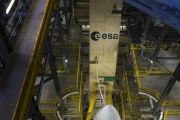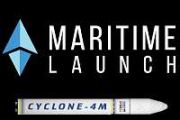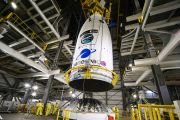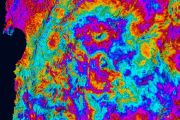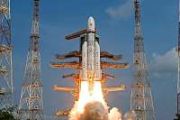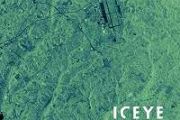
Copernical Team
Red bodies similar to Kuiper objects found in main asteroid belt
 Two asteroids (203 Pompeja and 269 Justitia) have been discovered with a redder spectrum than any other object in the asteroid belt between Mars and Jupiter. The discovery was led by HASEGAWA Sunao, Associate Senior Researcher at ISAS JAXA, with an international team of researchers from MIT, the University of Hawai'i, Seoul National University, Kyoto University and the Laboratoire d'Astrophysiqu
Two asteroids (203 Pompeja and 269 Justitia) have been discovered with a redder spectrum than any other object in the asteroid belt between Mars and Jupiter. The discovery was led by HASEGAWA Sunao, Associate Senior Researcher at ISAS JAXA, with an international team of researchers from MIT, the University of Hawai'i, Seoul National University, Kyoto University and the Laboratoire d'Astrophysiqu Space Tourism, Space Entrepreneurs and the Business and Economics of Space
 Recent developments related to Space are simply astonishing. Jeff Bezos, founder of Amazon, went to space just a few days ago on July 20, 2021 on Blue Origin's New Shepard rocket. Blue Origin is a space tourism company founded by Jeff Bezos in 2000. In addition to the brother of Jeff Bezos (Mark Bezos), the two other passengers in the trip were Wally Funk (82), who became the oldest person to go
Recent developments related to Space are simply astonishing. Jeff Bezos, founder of Amazon, went to space just a few days ago on July 20, 2021 on Blue Origin's New Shepard rocket. Blue Origin is a space tourism company founded by Jeff Bezos in 2000. In addition to the brother of Jeff Bezos (Mark Bezos), the two other passengers in the trip were Wally Funk (82), who became the oldest person to go Hubble finds first evidence of water vapor on Ganymede
 For the first time, astronomers have uncovered evidence of water vapor in the atmosphere of Jupiter's moon Ganymede. This water vapor forms when ice from the moon's surface sublimates - that is, turns from solid to gas.
Scientists used new and archival datasets from NASA's Hubble Space Telescope to make the discovery, published in the journal Nature Astronomy.
Previous research has offere
For the first time, astronomers have uncovered evidence of water vapor in the atmosphere of Jupiter's moon Ganymede. This water vapor forms when ice from the moon's surface sublimates - that is, turns from solid to gas.
Scientists used new and archival datasets from NASA's Hubble Space Telescope to make the discovery, published in the journal Nature Astronomy.
Previous research has offere Apollo to Artemis: Drilling on the Moon
 Fifty years ago, Apollo 15 lifted off from Kennedy Space Center, sending Commander David R. Scott, Command Module Pilot Alfred M. Worden, and Lunar Module Pilot James B. Irwin on the first of three Apollo "J" missions.
These missions gave astronauts the opportunity to explore the Moon for longer periods using upgraded and more plentiful scientific instruments than ever before. Apollo 15 wa
Fifty years ago, Apollo 15 lifted off from Kennedy Space Center, sending Commander David R. Scott, Command Module Pilot Alfred M. Worden, and Lunar Module Pilot James B. Irwin on the first of three Apollo "J" missions.
These missions gave astronauts the opportunity to explore the Moon for longer periods using upgraded and more plentiful scientific instruments than ever before. Apollo 15 wa NASA's Fermi Spots a Supernova's 'Fizzled' Gamma-ray Burst
 Greenbelt MD (SPX) Jul 27, 2021
On Aug. 26, 2020, NASA's Fermi Gamma-ray Space Telescope detected a pulse of high-energy radiation that had been racing toward Earth for nearly half the present age of the universe. Lasting only about a second, it turned out to be one for the record books - the shortest gamma-ray burst (GRB) caused by the death of a massive star ever seen.
GRBs are the most
Greenbelt MD (SPX) Jul 27, 2021
On Aug. 26, 2020, NASA's Fermi Gamma-ray Space Telescope detected a pulse of high-energy radiation that had been racing toward Earth for nearly half the present age of the universe. Lasting only about a second, it turned out to be one for the record books - the shortest gamma-ray burst (GRB) caused by the death of a massive star ever seen.
GRBs are the most Progress 77 and Pirs undocked from Station
 The unpiloted Russian Progress 77 cargo spacecraft undocked from the International Space Station while attached to the Pirs docking compartment at 6:55 a.m. EDT.
The spacecraft will reenter Earth's atmosphere and harmlessly burn up over the south Pacific. The mission launched and docked to the space station in February delivering more than a ton of cargo to the Expedition 65 crew.
De
The unpiloted Russian Progress 77 cargo spacecraft undocked from the International Space Station while attached to the Pirs docking compartment at 6:55 a.m. EDT.
The spacecraft will reenter Earth's atmosphere and harmlessly burn up over the south Pacific. The mission launched and docked to the space station in February delivering more than a ton of cargo to the Expedition 65 crew.
De MDA awarded next contract for flagship Canadarm3 Program
 MDA Ltd. has been awarded a $35.3 million contract from the Canadian Space Agency (CSA) for the design of the Gateway External Robotics Interfaces (GERI), a key component of Canadarm3 which will be installed on the international Lunar Gateway.
MDA has completed Phase A, the system definition phase of this GERI project. This new contract award covers the preliminary and detailed design of t
MDA Ltd. has been awarded a $35.3 million contract from the Canadian Space Agency (CSA) for the design of the Gateway External Robotics Interfaces (GERI), a key component of Canadarm3 which will be installed on the international Lunar Gateway.
MDA has completed Phase A, the system definition phase of this GERI project. This new contract award covers the preliminary and detailed design of t D-Orbit completes deployment phase of WILD RIDE space mission
 D-Orbit, the space logistics and transportation company, announced that it has successfully completed the deployment phase of its WILD RIDE mission. As part of this phase, D-Orbit's ION Satellite Carrier (ION), the company's proprietary space transportation vehicle, successfully deployed all six satellites hosted onboard and will now proceed with the in-orbit demonstration of 12 hosted payloads.
D-Orbit, the space logistics and transportation company, announced that it has successfully completed the deployment phase of its WILD RIDE mission. As part of this phase, D-Orbit's ION Satellite Carrier (ION), the company's proprietary space transportation vehicle, successfully deployed all six satellites hosted onboard and will now proceed with the in-orbit demonstration of 12 hosted payloads. How Chinese astronauts stay healthy in space
 Three Chinese astronauts have been living and working in China's space station core module Tianhe for more than a month. They are scheduled to stay in space for three months.
The astronauts have been exercising, maintaining healthy diets and undergoing regular check-ups to reduce the effects of living in a microgravity environment.
Scientists have found that microgravity weakens both
Three Chinese astronauts have been living and working in China's space station core module Tianhe for more than a month. They are scheduled to stay in space for three months.
The astronauts have been exercising, maintaining healthy diets and undergoing regular check-ups to reduce the effects of living in a microgravity environment.
Scientists have found that microgravity weakens both Zhurong marks 1st anniversary since launch with dune exploration
 China's Zhurong Mars rover finished exploring a sand dune on the red planet on the first anniversary of the launch of the country's first interplanetary expedition, the China National Space Administration said on Friday.
The robot headed toward the dune earlier this week and began to take photographs, then activated onboard scientific equipment to survey the dune and its surroundings, the
China's Zhurong Mars rover finished exploring a sand dune on the red planet on the first anniversary of the launch of the country's first interplanetary expedition, the China National Space Administration said on Friday.
The robot headed toward the dune earlier this week and began to take photographs, then activated onboard scientific equipment to survey the dune and its surroundings, the 





